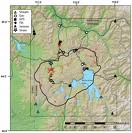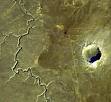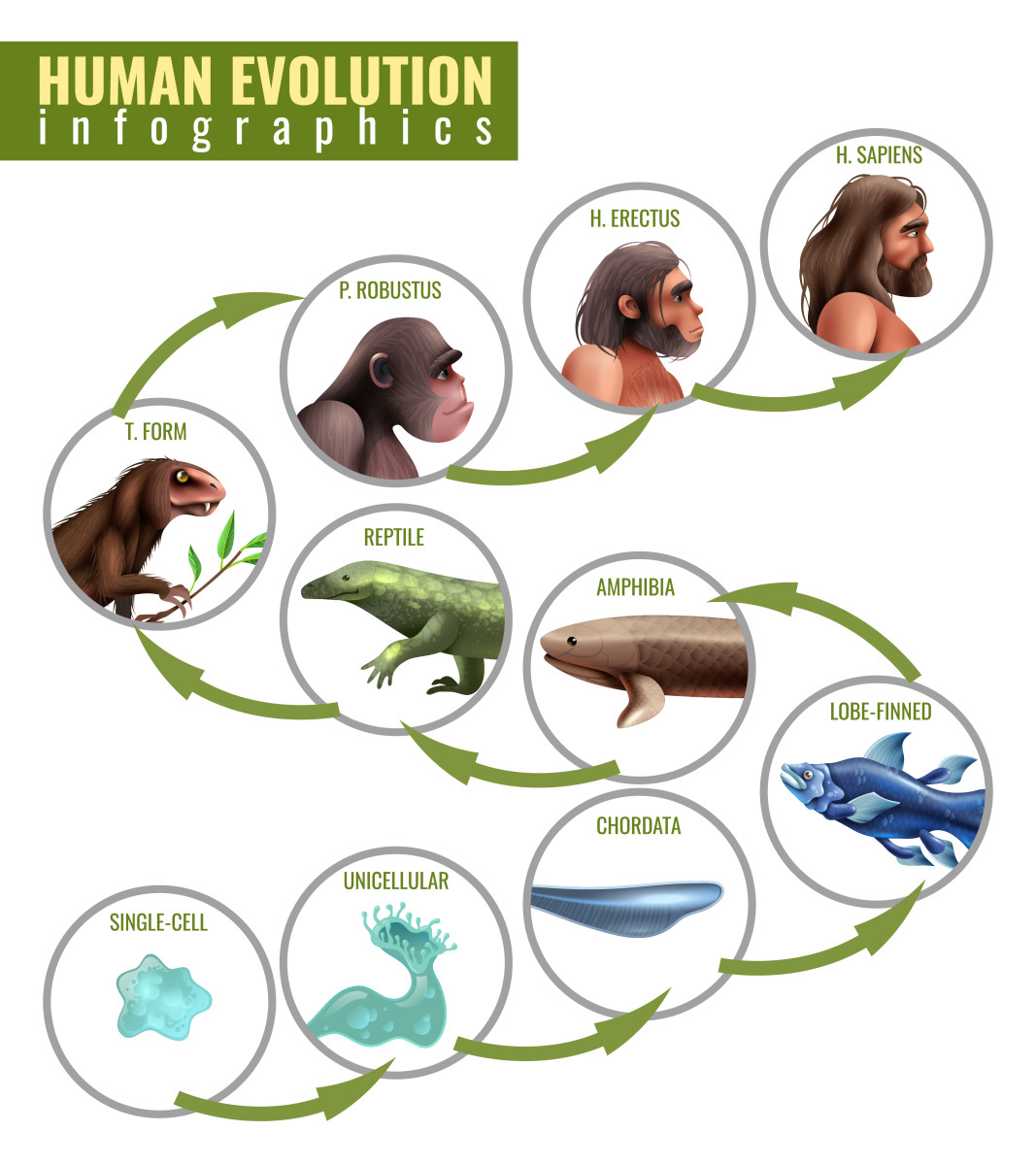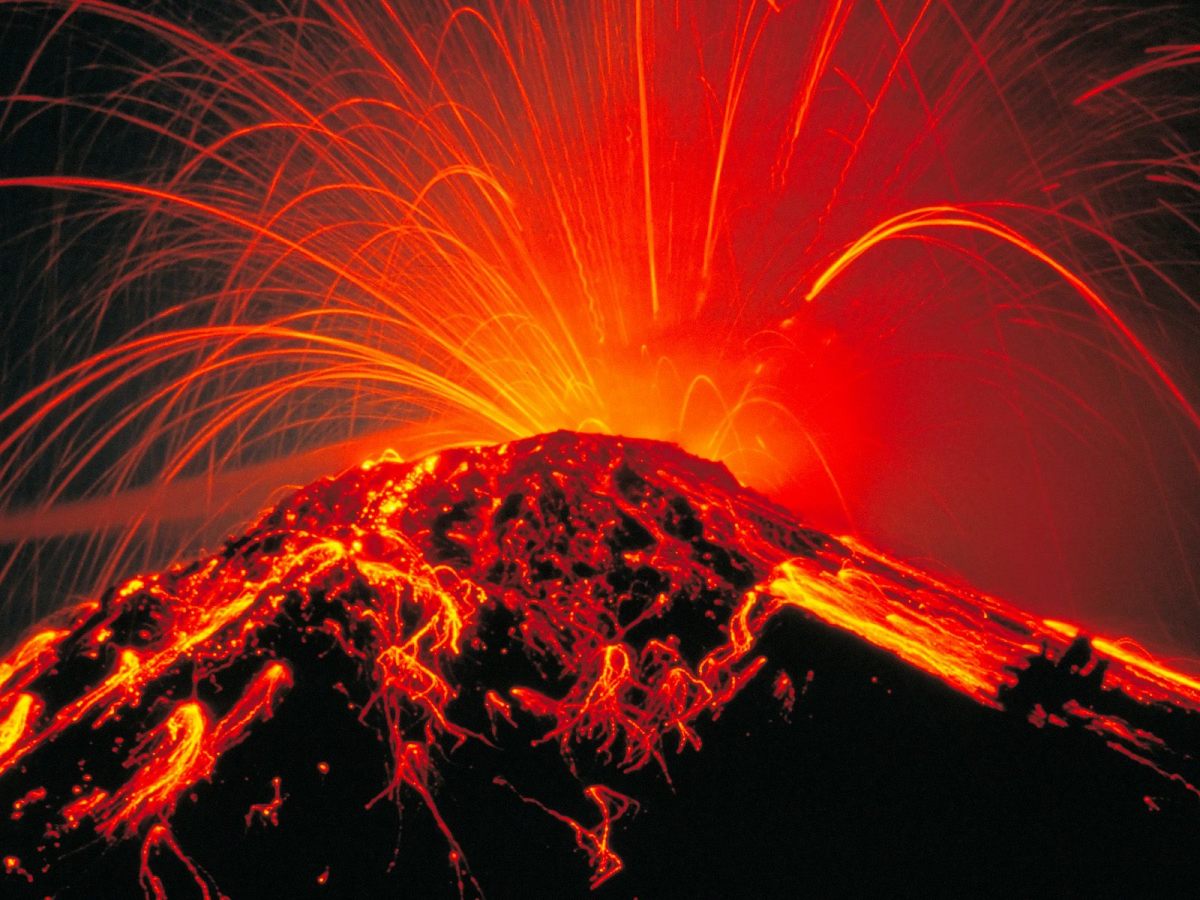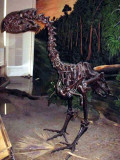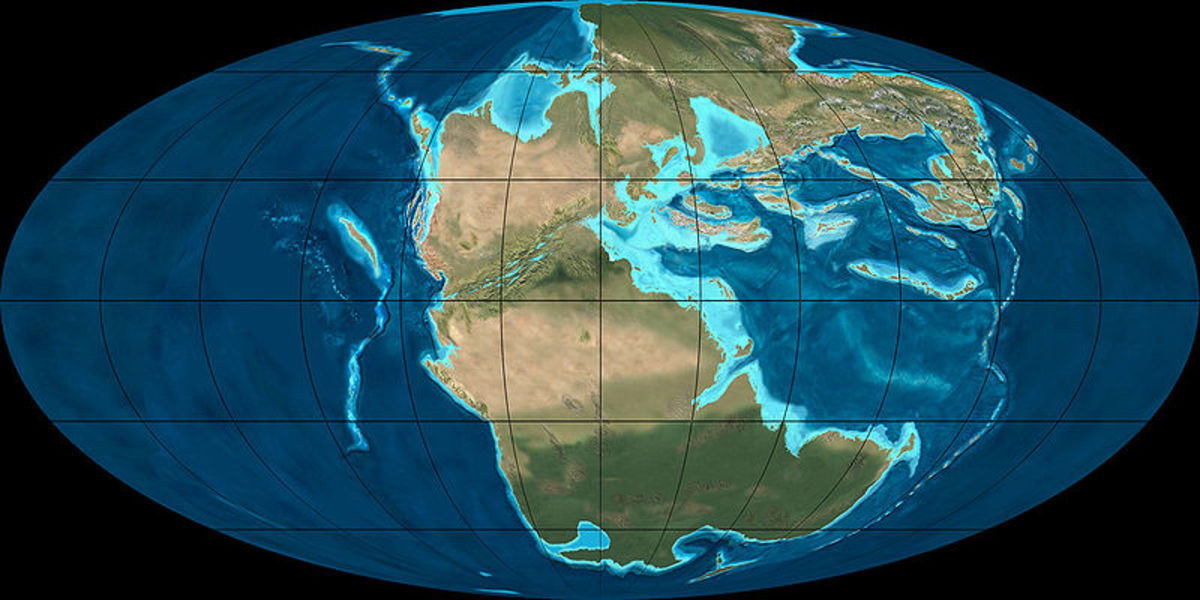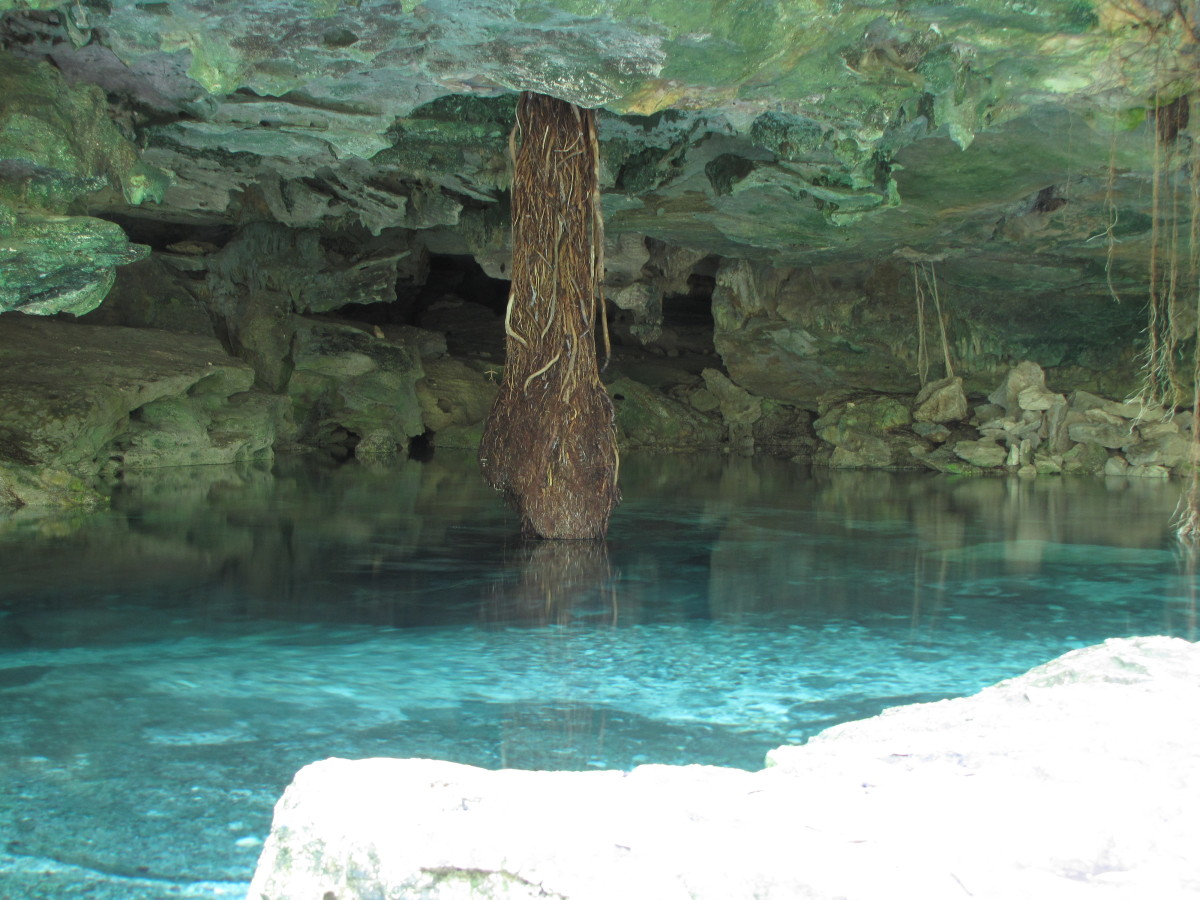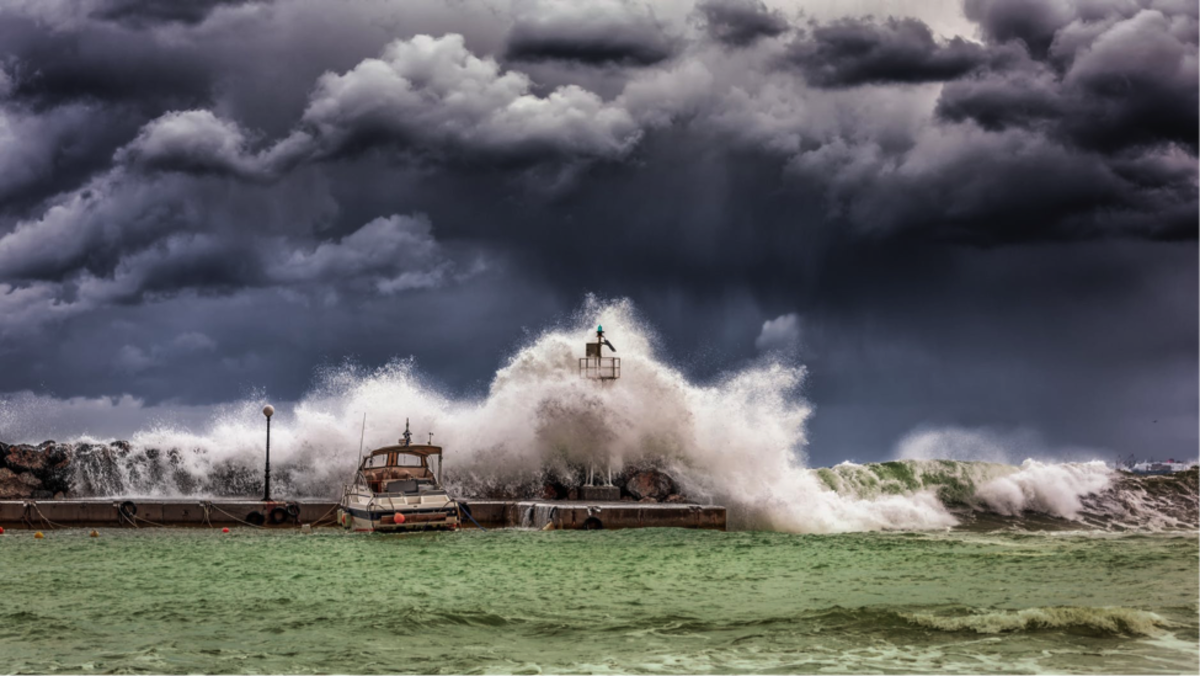The Threatened Passengers on Space-Ship Earth




Some earlier events make Krakatoa like a gopher fart while walking in the park.
Climate Change? Ha! We're only amateurs.
School kids love to see artist’s lurid renditions of asteroids and their ilk tearing in from outer space and smashing into the Earth, causing tsunamis, earthquakes, volcanoes and mass extinction. In the movies, someone like Bruce Willis or Sly Stallone saves the world at the last minute from these deadly lumps of real estate by a well- placed nuclear device.
Meanwhile, every news broadcast we suffer through has depressing details of how we are choking ourselves to death with carbon emissions because of our selfish, almost criminal, use of our motor cars. Politicians eagerly seize this to make political gain or raise more “green” taxes.
There can be little doubt that we do have to become more “green” to stave-off short-term calamity, but if we only knew what menace really stalks our unhappy little civilization, our petty little worries over climate change would fade decidedly in importance. And as for dangerous lumps of rock from space, they visit now and again, but even most of these pale in comparison with the very real threat lurking just under the surface of the planet.
We are all familiar with volcanoes: those that spout columns of fire and ash; emit smoking rivers of larva, red-hot “bombs“ and ash; commit a lot of local mayhem and then die down again, rarely killing more than a handful of people these days, and most of them are the die-hards who refuse to evacuate, assuring that they do, indeed, “die hard.”
But every so often in Earth’s history, quite another type of volcanic event occurs, one that causes climate change, world-wide plant failure and mass extinctions of most animal life.
These are the “Flood Basalt Province” eruptions, as much like a usual volcanic eruption as a pub dart is to an exocet missile. In the amount of damage and change wrought on life by these mammoth extrusions of basalt and sulphur gases, they make the Krakatoa and Stromboli eruptions, two of the worst in recent history, like a gopher fart during a walk in the park.
They are extremely rare, if not, we would be living on a dead planet a long time ago. In fact, they occur, on average, about every 25 million years. The volume of basalt magma erupted is overwhelming, in the order of one million cubic KILOMETERS!
This does not happen all at once, but when we get one of these events, they tend to keep regularly spewing-forth for hundreds of years - maybe as much as half a million. As the material ejected - basalt magma - is far richer in sulphur dioxide than the basic magma -silicic magma - of volcanoes and even super-volcanoes, the potential for environmental collapse is catastrophic.
If this sulphur dioxide is able to reach the stratosphere by means of explosive plumes from the volcano, or huge erupting vents, a worst case scenario could occur, sunlight filtered out, with the majority of plant and animal life being made extinct.
The last of these disastrous eruptions seems to have occurred 16 million years ago on the Columbia River Plateau in the north-west USA. It was accompanied by a relatively minor mass extinction.
The extinctions we are all familiar with, if not the real cause, was the one occurring at the Cretaceous/Tertiary boundary, 65 million years ago that put paid to the dinosaurs. We now know two catastrophic events coincided to cause this amazing event. One was the arrival of the largest asteroid in the past 500 million years. The effects of this combined with the Deccan Traps flood basalt eruptions in India. But even this milestone calamity in Earth’s history pales when compared with the volcanic disaster causing the greatest mass extinction of all time, 248 million years ago, between the Permian and Triassic periods. Here, we can find no evidence of a heavenly body aiding in the destruction, but the event coincides with a gargantuan eruption of a flood basalt province, at least two million cubic kilometres in Siberia.
Flood basalt eruptions have often been associated with the tectonic plates under continents splitting, often under the oceans. There have only been about 11 episodes over the last 250 million years. The largest, curiously, involved the British Isles and Greenland 57 million years ago, erupting seven million kilometres of flood basalt and accompanying sulphur dioxide which, if forced into the stratosphere, would have reduced the sunlight reaching Earth, causing plant failure and mass extinctions. These events do seem so far away and far apart it’s hard to be scared of them, but they do, also, make the emissions from the exhaust of the family Ford a bit tame. In the regard to when to expect the next catastrophic eruption from the bowels of the planet? Probably not for millions of year…but could be tomorrow. And this is something else from the eruptions we do fear and do see the warning signs of: Yellowstone, Popocatepetl, Vesuvius (again), Etna (regularly), and all the rest. They are also different from the “super-volcanoes” which can also release enough dangerous gasses to cause climate change and enough power to locally threaten life for hundreds of square miles.
Man’s Pollution? Asteroids? It Goes Deeper Than That.
Some earlier event make Krakatoa seem like a gopher fart during a walk in the park.
School kids love to see artist’s lurid renditions of asteroids and their ilk tearing in from outer space and smashing into the Earth, causing tsunamis, earthquakes, volcanoes and mass extinction. In the movies, someone like Bruce Willis or Sly Stallone saves the world at the last minute from these deadly lumps of real estate by a well- placed nuclear device.
Meanwhile, every news broadcast we suffer through has depressing details of how we are choking ourselves to death with carbon emissions because of our selfish, almost criminal, use of our motor cars. Politicians eagerly seize this to make political gain or raise more “green” taxes.
There can be little doubt that we do have to become more “green” to stave-off short-term calamity, but if we only knew what menace really stalks our unhappy little civilization, our petty little worries over climate change would fade decidedly in importance. And as for dangerous lumps of rock from space, they visit now and again, but even most of these pale in comparison with the very real threat lurking just under the surface of the planet.
We are all familiar with volcanoes: those that spout columns of fire and ash; emit smoking rivers of larva, red-hot “bombs“ and ash; commit a lot of local mayhem and then die down again, rarely killing more than a handful of people these days, and most of them are the die-hards who refuse to evacuate, assuring that they do, indeed, “die hard.”
But every so often in Earth’s history, quite another type of volcanic event occurs, one that causes climate change, world-wide plant failure and mass extinctions of most animal life.
These are the “Flood Basalt Province” eruptions, as much like a usual volcanic eruption as a pub dart is to an exocet missile. In the amount of damage and change wrought on life by these mammoth extrusions of basalt and sulphur gases, they make the Krakatoa and Stromboli eruptions, two of the worst in recent history, like a gopher fart during a walk in the park.
They are extremely rare, if not, we would be living on a dead planet a long time ago. In fact, they occur, on average, about every 25 million years. The volume of basalt magma erupted is overwhelming, in the order of one million cubic KILOMETERS!
This does not happen all at once, but when we get one of these events, they tend to keep regularly spewing-forth for hundreds of years - maybe as much as half a million. As the material ejected - basalt magma - is far richer in sulphur dioxide than the basic magma -silicic magma - of volcanoes and even super-volcanoes, the potential for environmental collapse is catastrophic.
If this sulphur dioxide is able to reach the stratosphere by means of explosive plumes from the volcano, or huge erupting vents, a worst case scenario could occur, sunlight filtered out, with the majority of plant and animal life being made extinct.
The last of these disastrous eruptions seems to have occurred 16 million years ago on the Columbia River Plateau in the north-west USA. It was accompanied by a relatively minor mass extinction.
The extinctions we are all familiar with, if not the real cause, was the one occurring at the Cretaceous/Tertiary boundary, 65 million years ago that put paid to the dinosaurs. We now know two catastrophic events coincided to cause this amazing event. One was the arrival of the largest asteroid in the past 500 million years. The effects of this combined with the Deccan Traps flood basalt eruptions in India. But even this milestone calamity in Earth’s history pales when compared with the volcanic disaster causing the greatest mass extinction of all time, 248 million years ago, between the Permian and Triassic periods. Here, we can find no evidence of a heavenly body aiding in the destruction, but the event coincides with a gargantuan eruption of a flood basalt province, at least two million cubic kilometres in Siberia.
Flood basalt eruptions have often been associated with the tectonic plates under continents splitting, often under the oceans. There have only been about 11 episodes over the last 250 million years. The largest, curiously, involved the British Isles and Greenland 57 million years ago, erupting seven million kilometres of flood basalt and accompanying sulphur dioxide which, if forced into the stratosphere, would have reduced the sunlight reaching Earth, causing plant failure and mass extinctions. These events do seem so far away and far apart it’s hard to be scared of them, but they do, also, make the emissions from the exhaust of the family Ford a bit tame. In the regard to when to expect the next catastrophic eruption from the bowels of the planet? Probably not for millions of years…but could be tomorrow. And this is something apart from the eruptions we do fear and do see the warning signs of: Popocatepetl, Vesuvius (again), Etna (regularly), and all the rest. They are also different from the “super-volcanoes,” such as will be Yellowstone, which can also release enough dangerous gasses to cause climate change and enough power to locally threaten life for hundreds of square miles.
Notes:
Scientists still do not agree what caused mass extinctions and there maybe many contributory factors as well as those mentioned here. In the fossil record, we have evidence of 6 major extinctions and up to 20 minor events. It seems likely that 99% of all the life forms ever once alive have become extinct for one reason or another. When one door shuts, another has opened, and man might well not have been here had not the 65 million year extinction not cleared the dinosaurs, paving the way for true mammals to emerge as the dominant species. As in the far older mass dying on 251 million years ago, mammal-like reptiles were displaced in favour of the dinosaurs.
But regardless of all the theories put forth about extinctions, there is no doubt that volcanic eruptions played a major part in many of the events.
I suggest the book, “Volcanoes, Earthquakes and Tsunamis,” by David A. Rothery for further reading on this interesting subject which we should perhaps have a duty to know something about. I used the book as a reference for this hub which only scratched the surface of the subject.


